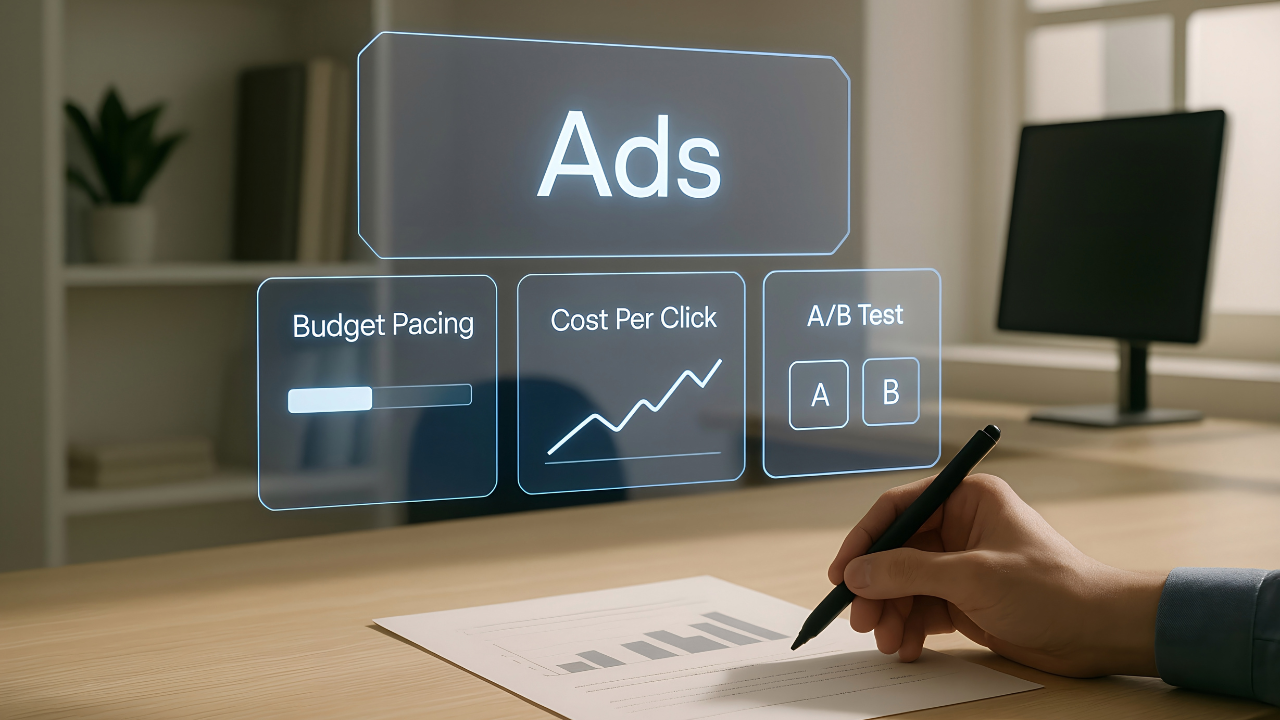
In this guide, we’ll break down what A/B testing ads means, why it’s essential for online marketing success, and how you can run winning tests across popular ad platforms like Facebook, Instagram, and Google.
Ever wondered why some ads just “click” while others flop? That’s the magic (and science) of A/B testing, one of the most powerful tools in digital marketing. In a world where online advertising is crowded, guessing what your audience wants can waste both time and ad spend. A/B testing helps you make data-driven decisions, boost conversions, and create ads that truly resonate with your audience.
In this guide, we’ll break down what A/B testing ads means, why it’s essential for online marketing success, and how you can run winning tests across popular ad platforms like Facebook, Instagram, and Google.

A/B testing (also known as split testing) is a method of comparing two versions of an ad to determine which one performs better. You change one variable at a time, such as the headline, image, call-to-action (CTA), or ad copy, and show both versions to similar audiences.
By tracking metrics such as click-through rate (CTR), conversion rate, or cost per lead (CPL), you can clearly see which version yields better results.
For example:
- Ad A uses “Get 50% off today.”
- Ad B uses “Shop Now & Save 50%.”
The results might surprise you. Sometimes, a simple wording change can increase conversions by 20% or more.
To maximise results, test one element at a time so you can isolate the impact of each change. Here are common variables to experiment with:
- Headlines: Test emotional vs. informative headlines.
- Visuals: Try lifestyle images, product photos, or short videos.
- Copy Length: Compare concise vs. detailed ad text.
- Call-to-Action: “Learn More” vs. “Get Started” can make a big difference.
- Audience Targeting: Experiment with different interests, demographics, or lookalike audiences.
- Ad Formats: Carousel vs. single image, video vs. static, etc.
A/B testing is one of the creative strategies we employed for Her Juice Bar when they approached Branderah, intending to increase online sales through Meta Ads.
1. Removes Guesswork: Instead of assuming what works, A/B testing uses real data from your audience to guide decisions.
2. Boosts ROI: By continuously optimising ads, you reduce wasted spend and focus your budget on what actually converts.
3. Improves Audience Insights: Testing reveals audience preferences from colour choices to emotional triggers, helping you refine your targeting and creative strategy.
4. Adapts to Algorithm Changes: Platforms like Meta (Facebook/Instagram) and Google Ads frequently update their algorithms. Testing ensures your creatives stay effective even as trends shift.
Below are some practical A/B testing examples to illustrate how marketers experiment with different ad and campaign elements to improve performance:
Example:
- Version A: “Shop Now”
- Version B: “Get 20% Off Today”. A small tweak in your CTA can dramatically impact clicks and conversions. CTAs that use urgency or value (like a discount or time limit) often outperform generic ones.
What to measure: Click-Through Rate (CTR), Conversion Rate.
Example:
- Version A: “Discover Skincare That Works”
- Version B: “Finally, Clear Skin in 7 Days!”
Headlines are often the first thing users see. Emotionally benefit-driven headlines tend to attract more engagement than neutral ones.
What to measure: CTR, Cost per Click (CPC), Engagement Rate.
Example:
- Version A: A static product image.
- Version B: A lifestyle video showing the product in use.
Different visuals evoke different emotions. Some audiences respond better to clean, product-focused images, while others engage more with storytelling videos.
What to measure: Engagement Rate, Video View Time, Conversion Rate.
Example:
- Version A: Interest-based targeting (e.g., “fitness lovers”).
- Version B: Lookalike audience based on past purchasers.
Different audience segments may respond differently to the same ad creative.
What to measure: Cost per Lead (CPL), Return on Ad Spend (ROAS).
Example:
- Version A: Facebook Feed placement.
- Version B: Instagram Stories placement.
The same creative might perform better depending on where it appears. Vertical content might outperform square formats on Stories, for instance.
What to measure: Cost per Result, CTR, Engagement Rate.
At Branderah, we help brands design, test, and scale high-performing digital campaigns that deliver measurable results. Contact Branderah today, and let’s get your campaigns working for you.
Reach out today — we’d love to hear from you! Let’s bring your vision to life.